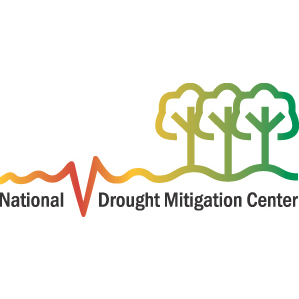
The National Drought Mitigation Center will celebrate its 20th anniversary from 5-7 p.m., Dec. 8 at the International Quilt Study Center & Museum at 33rd and Holdrege streets. RSVPs are requested by Dec. 4 at http://go.unl.edu/crfv.
"We'd like to take this chance to thank our collaborators across the university and across the country, and also get to know new potential collaborators, as interest in the food-water-energy nexus increases," said Michael Hayes, director of the NDMC since 2007.
The reception coincides with a meeting with collaborators from the National Integrated Drought Information System program office and from the National Oceanic and Atmospheric Administration. As of July 1, the NDMC became the host organization of a new NOAA-NIDIS initiative, the Drought Risk Management Research Center, created in part to respond to drought early warning and planning research needs as they arise.
Don Wilhite established the drought center at UNL in 1995. Wilhite and others had noticed that historically, the prevailing response to drought had been to treat each one as a separate act of God, requiring a comparable act of Congress to dispense relief. Based on climatology – a long-term understanding of weather patterns – Wilhite founded the center to help spread the idea that drought is a recurrent feature of nearly every climate on the planet, and that people should be prepared rather than taken by surprise the next time a drought occurs. Wilhite had previously established the International Drought Information Center.
The drought center evolved from a long-term interest in drought and drought management at the University of Nebraska.
"As my research program evolved in the early 1980s, it became apparent that there existed a considerable gap between our knowledge of drought and the implementation of preparedness strategies to reduce the recurring impacts of this extreme climate event in the U.S. and globally," Wilhite said. "The formation of the drought center provided a new focus on all aspects of drought management—from monitoring and early warning to preparedness and policy development. Today, with the growing interest and concern about climate change, and how it is affecting and will continue to affect the frequency and severity of extreme climate events, including drought, global interest in drought management has exploded. The University of Nebraska's drought center is front and center in efforts globally to improve drought management through proactive measures aimed at risk reduction."
Mark Svoboda, leader of the NDMC's Monitoring area, said, "We certainly haven't 'solved' the drought problem, but a lot more people are aware of it and aware that they should monitor and plan for it. As people come to understand that they can detect drought before it's too late, now they're starting to ask what they should do about it."
Svoboda has been with the NDMC since the beginning and is a founding author of the U.S. Drought Monitor, produced each week since 1999 in cooperation with the U.S. Department of Agriculture and NOAA to show the location and intensity of drought across the United States. The Drought Monitor has evolved from an experimental product, combining many different drought indicators into a single map, into a tool that is widely used by policy makers and media, and is hosted at the NDMC.
Since its establishment, the center has also:
• worked with decision makers across the country to develop drought plans. The center and its research partners have also developed drought planning guidance for decision makers at all scales. Products include Managing Drought Risk on the Ranch; Drought Ready Communities; and Planning and Drought (with the American Planning Association).
• worked with countries around the world on drought planning and on tailoring drought early warning systems for specific needs.
• established an extensive website (http://drought.unl.edu) that has been compared to an online textbook for drought planning. It includes Drought Basics, Drought for Kids, a collection of state and local drought plans, a database of drought management strategies, and much, much more.
The NDMC has developed several tools to help decision-makers, including:
• The U.S. Drought Monitor and related data and visualizations: http://droughtmonitor.unl.edu
• The Drought Risk Atlas: http://droughtatlas.unl.edu
• The Drought Impact Reporter: http://droughtreporter.unl.edu
• The Vegetation Drought Response Index (VegDRI): http://vegdri.unl.edu
In addition to ongoing relationships with the USDA and NOAA, the NDMC works with many federal agencies, including NASA, the National Science Foundation, the U.S. Geological Survey, the Bureau of Reclamation, the Army Corps of Engineers, the Centers for Disease Control, the Environmental Protection Agency, and more. Internationally, the NDMC works with the United Nations and many of its agencies, donor organizations such as the USAID and World Bank, with various countries and regional entities, and with non-governmental organizations.
The center has grown to its current size of 20 faculty and staff from an original group of six. In addition to climatologists, the core expertise, the staff includes a variety of social scientists.
When Wilhite moved on from the Drought Center in 2007, he become director of the School of Natural Resources, where the NDMC is based, for five years. Since rejoining the school's applied climate science faculty in 2012, Wilhite has focused on increasing understanding of climate change and its impacts in Nebraska and international efforts to advance the development of national drought management policies worldwide through the efforts of agencies of the United Nations.
Currently, a search for a new NDMC director is underway. Once a new director arrives, Hayes will move into a research and teaching role in the applied climate science program within UNL's School of Natural Resources.
More details at: http://go.unl.edu/5tbv